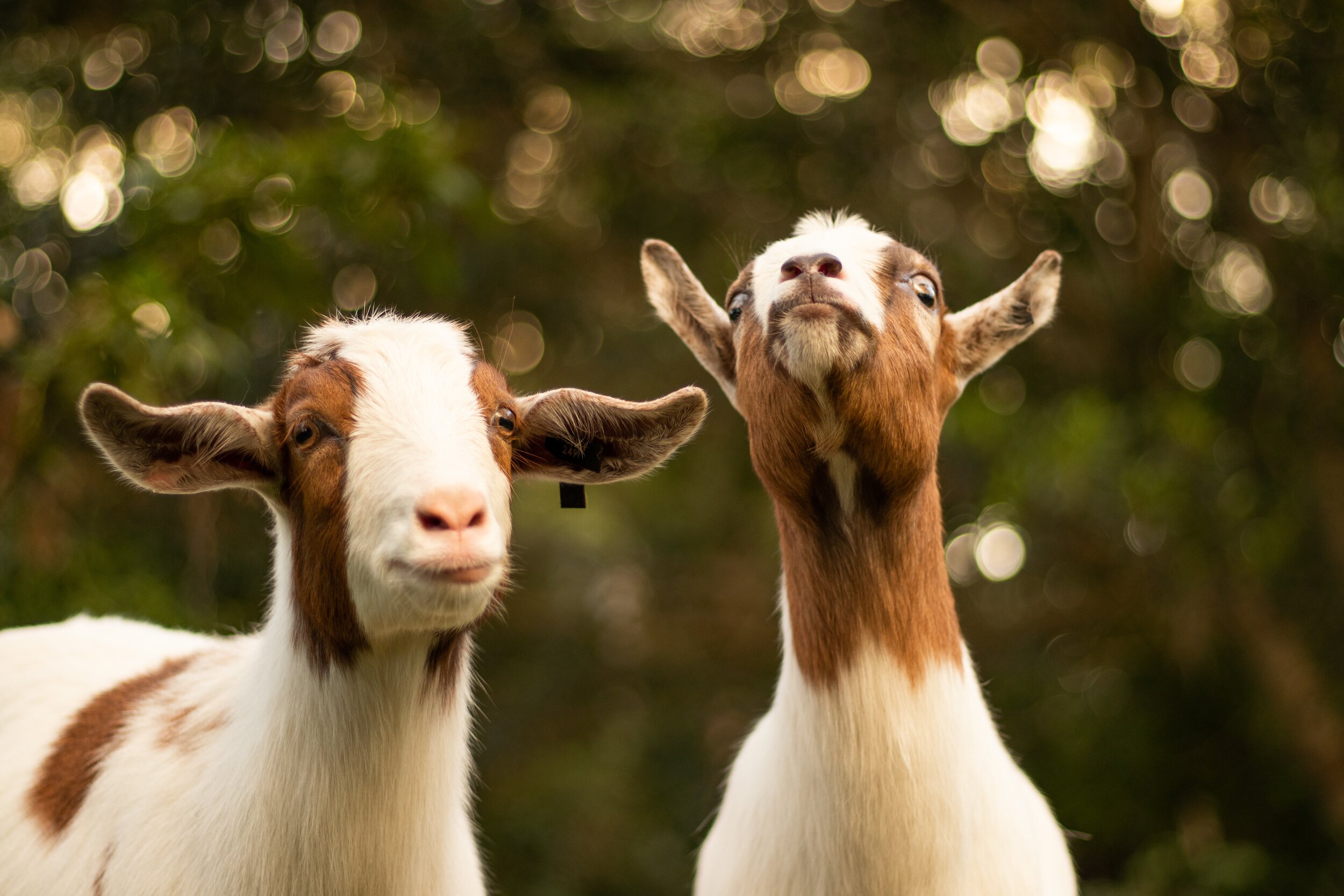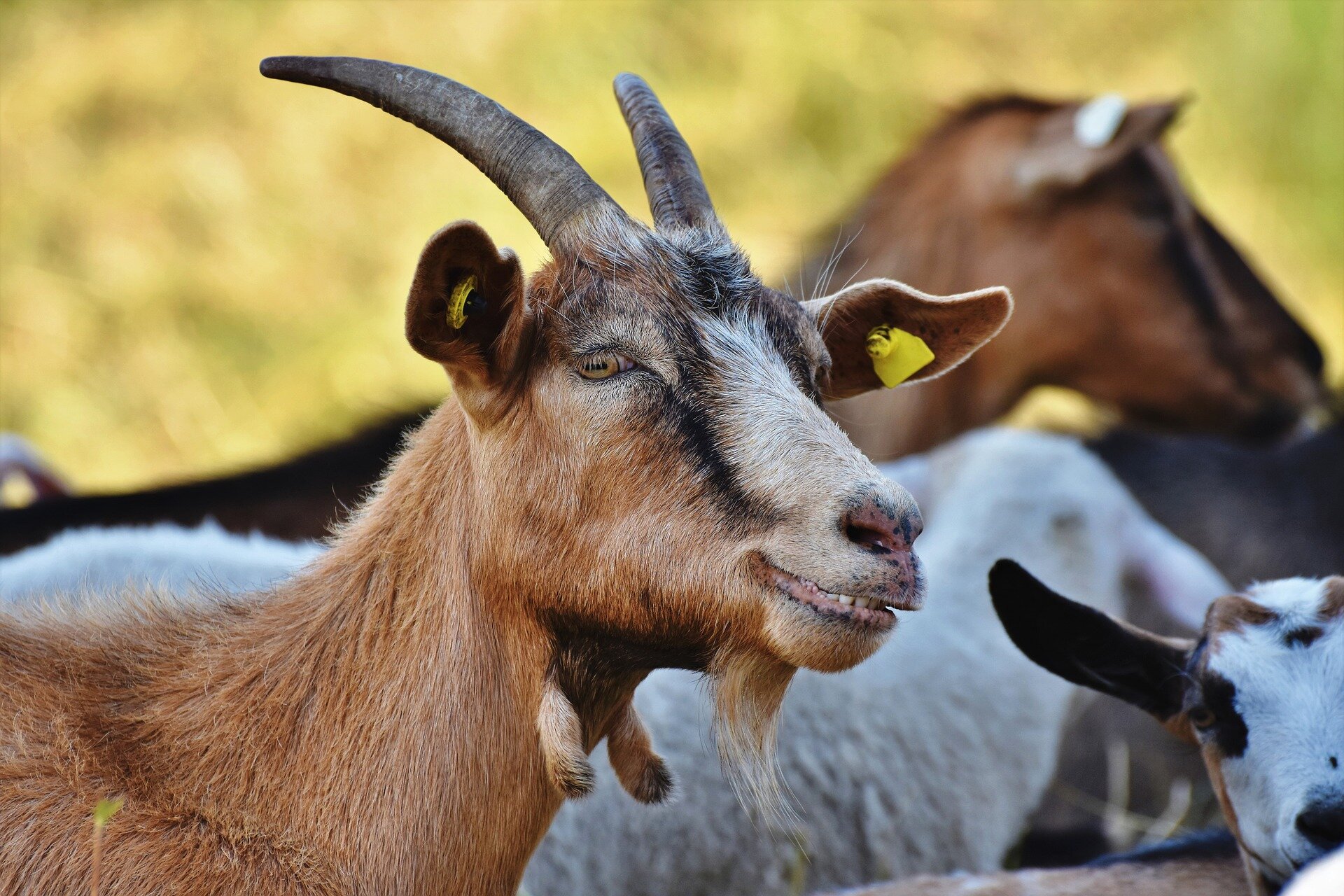8 Things You Didn’t Know About Goats
While goats are supplying families around the world with critical resources, voices attacking animal agriculture are misinformed about the important role goats play in managing vegetation, preventing fires, and providing nutrient-rich protein in places that lack food security. Read on to learn more.
Goats were among the first domesticated animals and continue to be the most widely used livestock on family farms across the globe. While it is often thought that goats are mischievous troublemakers, many of their surprising qualities actually contribute to the hardiness and utility that have allowed goats to support humans through the millenia through the production of meat, milk, and brush control.
1. For goats, life is one big game of ‘King of the Hill’
The domesticated goats we know and love, Capra aegagrus hircus, are a subspecies of their mountain goat ancestors, C. aegagrus. There are over 300 distinct breeds of domesticated goats recognized today descended from the mountain goats of Southwest Asia and Eastern Europe. These mountain origins have influenced goats’ sure-footed balance and instinct to stand at the highest possible point to feel safe.
Goats’ ‘king of the hill’ impulses are a familiar problem for farmers and goat owners who struggle to keep these curious ruminants from climbing over fences and onto vehicles, roofs, and other strange places. For example, a goat in Greece made international news when he was found stuck, hanging by his horns from a telephone wire. He was eventually rescued and returned to safety.
More enterprising goat owners have figured out how to monetize their goats’ climbing proclivities with Goat Yoga, where a group practices their poses together in a goat pasture in hopes that a lucky participant might tempt a goat to jump atop his or her back.
2. Goats don’t graze: they browse.
Four-stomached ruminants like cows and most sheep breeds have evolved to prefer eating from the ground, facing downward. Both sheep and cows have facial characteristics that favor grasses and ground cover plants. Goats, however, have survived in settings with either minimal forages or a diverse array of forage, which has given them a more versatile palate. They mostly prefer to eat from the top of a plant down, using their tough, agile lips and strongly leveraged jaw to pull leaves off of thorn-covered brambles, grab spiny bushes, or nibble down weeds that other ruminants would avoid.
While goats are widely believed to eat anything, like ‘Bill Grogan’s Goat’ from the children’s song who “ate three red shirts off the line,” this is mostly a myth. Goats won’t consume trash if offered an appropriate supply of healthy food but anecdotally there are cases where a curious or bored goat will nibble through garbage.
3. Goats help people manage difficult weed populations and even prevent fires.
Goats are xylotrophic, meaning they can eat plants with woody stems. This high-impact browsing benefits the environment by clearing pathways for other wildlife, mitigating the spread of noxious weeds, and prompting vegetation to grow more hardily and productively. Goats can help manage unwanted vegetation by killing an offending plant through repeated defoliation (stripping the leaves,) trampling the stems or vines, and encouraging the growth of more favorable ground cover through exposing the ground to more light and droppings.
Some cities and private companies are using goats to help manage public lands, like the city of West Sacramento which has invited its citizens to use the hashtag #goatcam to document their herd of 400 municipal ruminants as they munch down the brambles in public landscaping around town.
Goats have even been employed as firefighters. In 1982 the US Forest Service introduced goats to their fire hazard reduction plan. For decades the USFS has managed fires by creating ‘fuel breaks’ which are strips of ground in the forest where quick-burning vegetation have been cleared so that a forest fire will stop. With their eager browsing habits, goats are particularly suited to the types of browse that become fuel and have helped forest service officers create fuel breaks to halt a blazing forest fire.
4. Bucks (uncastrated male goats) smell absolutely terrible.
A female goat is called a doe or a nanny, and a baby goat is called a kid. A castrated male goat is called a wether and an uncastrated male goat is called a buck or a billy. Bucks produce an incredibly powerful odor especially when breeding season, or rut, begins during the fall as the days shorten. The effect is so powerful that it both draws in female goats and triggers ovulation. The smell tends to be particularly more pungent in dairy breeds like nubians.
Unfortunately this odor does not have the same attractiveness to most humans. Goat farmer Heather Jackson of Green Eggs and Goats describes the male goats smell:
“The reality is that the term “stink” does not even begin to describe the odor of a buck. Their malodorous stench is one that sneaks up on you, before hitting you with a force you wouldn’t have thought possible. You go from thinking “this smells fine” to “Oh my gosh, I’m going to vomit!” in a split second. It’s awful.”
Goat breeders who do not prefer the smell of billy goats have the option of artificial insemination.
5. Goats get a whole range of information from each others’ voices.
Scientists at the University of London have discovered that goats from different countries bleat with different accents. The researchers found that specific sound of a goat’s bleat acts like a ‘group badge’ signaling which herd they are from. Kids are born making a variety of sounds, eventually learning the particular inflections of their group.
According to a recent study published in Frontiers in Zoology, goats may be able to pick up on emotions in the voices of other herd members. By playing back recordings of goats in happy or frustrating situations, the researchers found that the listening goats’ heart rates changed sympathetically according to their comrades’ mood. While to humans, the pleased bleats and annoyed bleats sounded relatively the same, the goat’s responses demonstrated that goats are attentive to each other’s emotions as a way of protecting the herd and watching out for danger.
Some livestock owners (and/or neighbors) feel that goat’s bleats are among the most obnoxious animal noises on the farm. Others find humor in the situation. A billy in rut attempting to serenade does in heat is also quite a spectacle.
6. “Fainting goats” don’t actually faint
Despite the YouTube phenomenon, fainting goats - also called myotonic goats - are not actually losing consciousness or suddenly falling asleep. Myotonic goats have a condition in their muscles called myotonia congenita which causes them to stiffen when they are surprised or frightened. When the goat’s muscle cells contract this way the goat involuntarily falls over and stops moving for a short period of time. The condition is not painful and purely muscular having no neurological effect.
7. According to legend, goats may have discovered coffee in Ethiopia.
A story dating back to 850 AD tells of a young Ethiopian goatherd named Kaldi who regularly ran his goats through a grove of coffee trees. Kaldi noticed that when his goats ate the red coffee berries, they became so energized that they jumped and leaped about and wouldn’t sleep at night.
After sampling the berries himself the goatherd brought the coffee fruit to an Islamic monk at a nearby Sufi monastery, but the monk scolded Kaldi and threw the beans into the fire. To their shock, the roasted beans released a pleasant aroma, inspiring the first coffee beverage. While this goat story is likely apocryphal, Ethiopia’s largest coffee chain is still called Kaldi’s Coffee.
Other interesting goat-related legends include El Chupacabra and the Devil himself.
8. Goats are a critical source of food for people all over the world.
While North Americans primarily drink cow milk, goat milk is still the most consumed dairy beverage across the globe. While only 3 million goats are kept in North America and 18 million in Europe, there are 514 million goats in Asia, 291 in Africa, and 30 million in Central and South America.
The United Nations Food and Agriculture Organization points to goats as an essential intervention in regions of the planet the organization defines as ‘hunger zones.’ Goats can thrive in tough conditions off of less hospitable forage, their size allows women and children to care for them, and one goat can supply a family with milk, meat, fiber and an income from selling these products.
In parts of the world where food security is frequently threatened, goats’ hardiness, adaptability and byproducts make them an ideal resource for families in need. Major global organizations are already rolling out strategies to supply families with goats, but you can directly help a Syrian refugee family by sponsoring a goat through Lifting Hands International.
While goats are supplying families around the world with critical resources, voices attacking animal agriculture are misinformed about the important role goats play in managing vegetation, preventing fires, and providing nutrient-rich protein in places that lack food security. Support Sacred Cow to help spread the message about the environmental, nutritional and ethical case for better meat.
Support the case for better meat
The forthcoming documentary and book project Sacred Cow makes the nutritional, environmental, and ethical case for better meat. This includes incorporating small ruminants not only for the meat and milk they can provide, but for the invaluable grazing contributions they can make to regenerating and preserving ecosystems. Small ruminants like sheep and goats are often a more viable option for small and beginning farmers.
To learn more about Sacred Cow and to support the case for better meat click here.
Allie Hymas raises Icelandic sheep for meat and fiber in Southern Oregon's Rogue Valley. In addition to writing about sustainable agriculture, Allie supports and advocates for family farms as Northwest Farmer's Union secretary. Learn more @hymasfamilylamb or www.hymasfamilylamb.com.





